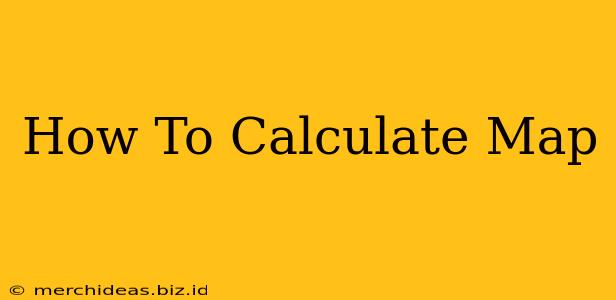Understanding map scale is crucial for anyone using maps for navigation, planning, or analysis. Whether you're a hiker planning a trek, a city planner designing infrastructure, or a student learning geography, knowing how to calculate map distances is a vital skill. This guide will walk you through the process, explaining different methods and providing practical examples.
Understanding Map Scale
Before diving into calculations, it's essential to grasp the concept of map scale. Map scale represents the ratio between a distance on the map and the corresponding distance on the ground. It's typically expressed in one of three ways:
-
Ratio Scale: This is a ratio representing the relationship, such as 1:50,000 (meaning 1 unit on the map equals 50,000 units on the ground). Units are consistent (e.g., centimeters to centimeters, inches to inches).
-
Verbal Scale: This describes the relationship using words, such as "1 centimeter equals 500 meters" or "1 inch equals 1 mile."
-
Graphical Scale: This uses a bar scale directly on the map. You measure the distance on the map against this bar to find the corresponding real-world distance.
Calculating Distances Using Different Map Scales
Let's explore how to calculate distances using each scale type:
Calculating with Ratio Scale
This is often the most straightforward method.
Example: A map has a ratio scale of 1:25,000. You measure a distance of 4 cm on the map. What's the real-world distance?
- Convert units to be consistent: If necessary, convert all units to the same system (e.g., centimeters).
- Multiply the map distance by the scale: 4 cm * 25,000 = 100,000 cm
- Convert to a more convenient unit: 100,000 cm = 1000 meters = 1 kilometer
Therefore, the real-world distance is 1 kilometer.
Calculating with Verbal Scale
This is similar to using a ratio scale; you just need to carefully interpret the verbal description.
Example: The map's verbal scale is "1 inch equals 1000 feet". You measure a distance of 2.5 inches. What's the real-world distance?
- Multiply the map distance by the scale: 2.5 inches * 1000 feet/inch = 2500 feet
- Convert to another unit if needed: 2500 feet ≈ 0.47 miles
The real-world distance is approximately 2500 feet or 0.47 miles.
Calculating with Graphical Scale
This method is simple and visual.
- Measure the distance on the map using a ruler.
- Align the measurement with the graphical scale provided on the map.
- Read off the corresponding ground distance directly from the scale. This eliminates the need for calculations. This is a great method for quick estimates.
Practical Tips and Considerations
- Accuracy: Always double-check your measurements. Small errors in measurement can lead to significant discrepancies in real-world distances.
- Map Projections: Remember that map projections distort distances, especially over large areas. The accuracy of your calculations depends on the projection used.
- Terrain: Real-world distances might differ from map distances due to terrain features (hills, valleys).
- Units: Pay close attention to units. Inconsistent units are a common source of errors.
Mastering Map Scale: Beyond Basic Calculations
While understanding basic calculations is essential, proficiency in using maps involves much more. Understanding map symbols, interpreting contours (for elevation), and using GPS technology in conjunction with maps all enhance your navigational and analytical skills.
By mastering map scale calculations, you'll gain valuable skills applicable across numerous fields, ensuring more accurate planning and navigation in various situations.
